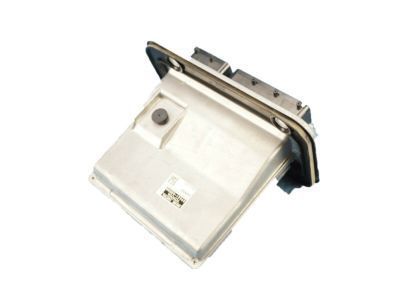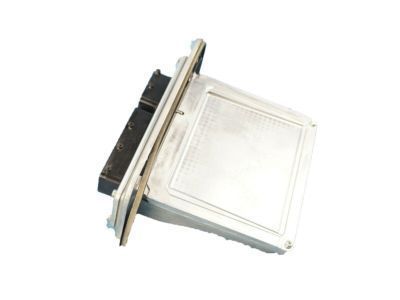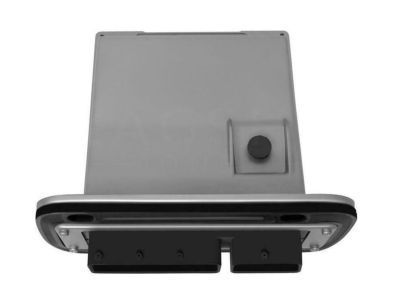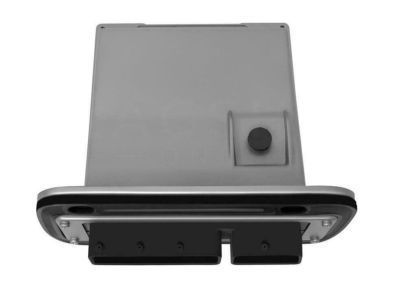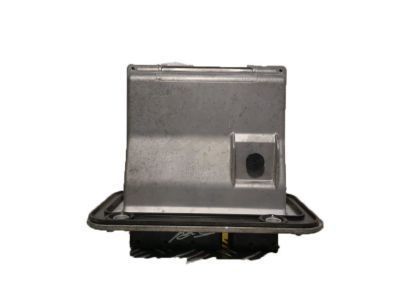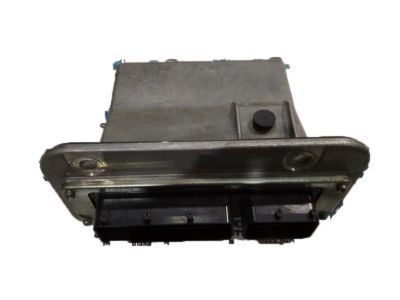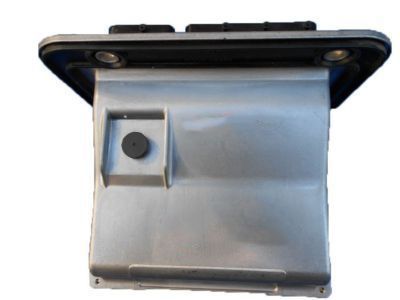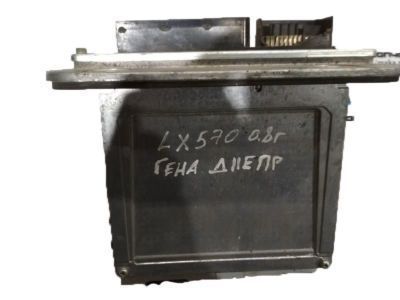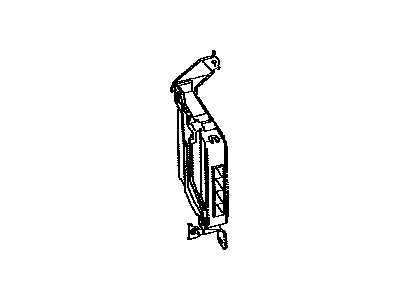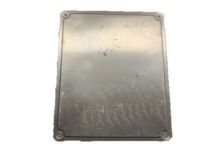

My Garage
My Account
Cart
Genuine Toyota Land Cruiser Engine Control Module
Engine Control Computer- Select Vehicle by Model
- Select Vehicle by VIN
Select Vehicle by Model
orMake
Model
Year
Select Vehicle by VIN
For the most accurate results, select vehicle by your VIN (Vehicle Identification Number).
50 Engine Control Modules found
Toyota Land Cruiser Ecu Ecm Engine Control Module
Part Number: 89661-60R00$801.07 MSRP: $1196.10You Save: $395.03 (34%)Ships in 1-3 Business DaysToyota Land Cruiser Ecu Ecm Engine Control Module
Part Number: 89661-60K80$818.33 MSRP: $1221.89You Save: $403.56 (34%)Ships in 1-3 Business DaysToyota Land Cruiser Ecu Ecm Engine Control Module
Part Number: 89661-60U50$994.57 MSRP: $1485.03You Save: $490.46 (34%)Ships in 1-3 Business DaysToyota Land Cruiser Ecu Ecm Engine Control Module
Part Number: 89661-60G62$967.83 MSRP: $1445.11You Save: $477.28 (34%)Ships in 1-3 Business DaysToyota Land Cruiser Ecu Ecm Engine Control Module
Part Number: 89661-60G60$967.83 MSRP: $1445.11You Save: $477.28 (34%)Ships in 1-3 Business DaysToyota Land Cruiser Ecu Ecm Engine Control Module
Part Number: 89666-60J41$857.99 MSRP: $1281.10You Save: $423.11 (34%)Ships in 1-3 Business DaysToyota Land Cruiser Ecu Ecm Engine Control Module
Part Number: 89661-60Y31$839.83 MSRP: $1253.99You Save: $414.16 (34%)Toyota Land Cruiser Ecu Ecm Engine Control Module
Part Number: 89661-60K81$818.33 MSRP: $1221.89You Save: $403.56 (34%)Ships in 1-3 Business DaysToyota Land Cruiser Ecu Ecm Engine Control Module
Part Number: 89661-60011$704.90 MSRP: $1115.72You Save: $410.82 (37%)Ships in 1-3 Business DaysToyota Land Cruiser Ecu Ecm Engine Control Module
Part Number: 89666-60R40$908.01 MSRP: $1355.78You Save: $447.77 (34%)Ships in 1-3 Business DaysToyota Land Cruiser Ecu Ecm Engine Control Module
Part Number: 89661-60Y40$785.80 MSRP: $1173.31You Save: $387.51 (34%)Ships in 1-3 Business DaysToyota Land Cruiser Ecu Ecm Engine Control Module
Part Number: 89666-60710$741.60 MSRP: $1115.67You Save: $374.07 (34%)Ships in 1-3 Business DaysToyota Land Cruiser Ecu Ecm Engine Control Module
Part Number: 89661-60U60$954.31 MSRP: $1424.92You Save: $470.61 (34%)Ships in 1-3 Business DaysToyota Land Cruiser Ecu Ecm Engine Control Module
Part Number: 89661-60A00$907.90 MSRP: $1355.62You Save: $447.72 (34%)Ships in 1-3 Business DaysToyota Land Cruiser Ecu Ecm Engine Control Module
Part Number: 89661-60Y30$839.83 MSRP: $1253.99You Save: $414.16 (34%)Ships in 1-3 Business DaysToyota Land Cruiser Ecu Ecm Engine Control Module
Part Number: 89661-6A220$550.81 MSRP: $827.83You Save: $277.02 (34%)Ships in 1-3 Business DaysToyota Land Cruiser Ecu Ecm Engine Control Module
Part Number: 89661-60D80$797.50 MSRP: $1190.78You Save: $393.28 (34%)Ships in 1-3 Business DaysToyota Land Cruiser Ecu Ecm Engine Control Module
Part Number: 89661-60C62$867.91 MSRP: $1295.90You Save: $427.99 (34%)Toyota Land Cruiser Ecu Ecm Engine Control Module
Part Number: 89666-60360$733.85 MSRP: $1103.98You Save: $370.13 (34%)
| Page 1 of 3 |Next >
1-20 of 50 Results
Toyota Land Cruiser Engine Control Module
If you are in demand for superior quality and affordable OEM Toyota Land Cruiser Engine Control Module, then shop with us! We own a wide range of the reduced-priced genuine Toyota Land Cruiser Engine Control Module. You can purchase in confidence as all parts come with a manufacturer's warranty. Any issues with our products? No need to worry as we have a hassle-free return policy to guide you every step of the way.
Toyota Land Cruiser Engine Control Module Parts Questions & Experts Answers
- Q: What are the functions of the Engine Control Module in the fuel injection system, and how do you safely remove it on Toyota Land Cruiser?A:The fuel injection system is controlled by a micro computer which is known as the Electronic Control Module (ECM), the information from the sensors that control the engine atmosphere including the intake air mass, intake air temperature, coolant temperature, engine speed as well as the amount of oxygen content in the exhaust. These signals assist in adjusting the fuel injection duration according to the requirement through a mechanism similar to the ECM, which in human body acts like the central nervous system where sensors are like nerves to transfer information to the brain which further evaluates the condition and alters the functionality of the human body. For instance, exhaust manifold built-in Oxygen Sensor, which measures the content of exhaust gas oxygen, sends a signal to the ECM if the level is incorrect and this causes a fast change in the air-fuel mixture setting. In most cases, if there is a problem with the sensor, then there is a backup circuit that lets the car to remain driveable until there is a resolution. Some of the safety measures include; switching off the power before removing electrical connectors, avoiding wrong battery connection, avoiding impact on EFI and ECM, careful during diagnostic exercise not to cause harm, should not tamper with ECM as it may affect warranty and should ensure water does not get inside the electronic parts during inspection or washing. To carry out the removal of the ECM, there is need to try the following steps; unfasten the negative terminal of the battery, unbolt the lower finish panel and the center console, undo the electrical connectors that are connected to the ECM, unbolt the mounting bolts, then raise the ECM out of the vehicle to install it, by reversing the above stated method.
Related Toyota Land Cruiser Parts
Browse by Year
2021 Engine Control Module 2020 Engine Control Module 2019 Engine Control Module 2018 Engine Control Module 2017 Engine Control Module 2016 Engine Control Module 2015 Engine Control Module 2014 Engine Control Module 2013 Engine Control Module 2012 Engine Control Module 2011 Engine Control Module 2010 Engine Control Module 2009 Engine Control Module 2008 Engine Control Module 2007 Engine Control Module 2006 Engine Control Module 2005 Engine Control Module 2004 Engine Control Module 2003 Engine Control Module 2002 Engine Control Module 2001 Engine Control Module 2000 Engine Control Module 1999 Engine Control Module 1998 Engine Control Module 1997 Engine Control Module 1996 Engine Control Module 1995 Engine Control Module 1994 Engine Control Module 1993 Engine Control Module 1992 Engine Control Module 1991 Engine Control Module 1990 Engine Control Module 1989 Engine Control Module 1988 Engine Control Module

